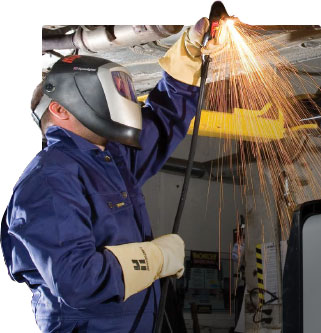Plasma
-
What is Plasma?
What is Plasma?
One common description of plasma is to describe it as the fourth state of matter. We normally think of the three states of matter as solid, liquid and gas. For a common element, water, these three states are ice, water and steam. The difference between these states relates to their energy levels. When we add energy in the form of heat to ice, the ice melts and forms water. When we add more energy, the water vaporizes into hydrogen and oxygen, in the form of steam. By adding more energy to steam these gases become ionized. This ionization process causes the gas to become electrically conductive. This electrically conductive, ionized gas is called a plasma.
-
Why isn't the torch firing?
If this happens there are a couple of likely culprits. The first culprit is the retaining cap. It mat be screwed on too tightly. The solution is simply to loosen it. If that doesn't fix the problem, then there could be something wrong with the consumables inside the torch. Possibly the wrong consumables have been loaded or possibly assembled in the wrong order. Remove the consumables from the torch, take everything apart and reassemble, making sure to match all the part numbers with the numbers shown on the top of the machine. If the torch still doesn't fire, then its probably time to place a call to our technical service team. One last thing that can be tried is plugging in and using another torch, this likely won't fix the problem but it will help our technical service team more quickly diagnose the issue.
-
Why am I using a lot more consumables?
Hypertherm invests a lot in engineering, includes a lot of patented technology and very carefully machines parts to very tight tolerances to ensure long life. There are however, many factors that can impact the life you'll get out of your consumables. Type and thickness of material being cut, number of holes and pierces you make, size of parts, etc. Still if you are doing the same type of cutting and notice consumables that used to last 1 to 2 hours are suddenly spent in half that time, its safe to say something is wrong.
Here are some things to consider. Check the nozzle, is it a drag cutting or regular nozzle? If its a drag cutting nozzle, is the nozzle being kept on the metal for the entire duration of the cut? Check the incoming air supply, as a sudden drop in life could mean moisture is getting into your incoming air supply. Make sure you are using genuine consumables manufactured by Hypertherm and not an aftermarket supplier without access to Hypertherm's patented technologies, or worse, a counterfeiter. Counterfeiters have gotten so good at copying Hypertherm's consumable packaging; its incredibly difficult to tell the difference between genuine and non-genuine consumables. Protect yourself by purchasing your genuine Hypertherm consumables with Trucut Solutions. You can shop online with us today.
-
Why isn't the system cutting like it used to?
Some change in quality is expected. For example, minor changes to edge angularity or the amount of dross you are seeing is quite common. But if cut quality is suddenly markedly worse, here are some things to try. Change out your nozzle and electrode as those two consumable parts are often the first to show signs of wear. If that doesn't fix the problem, try changing the swirl ring. Also, look at your air supply as moisture could be the culprit here as well.
Trucut Solution's is happy to help troubleshoot any cutting issues, contact the team via our 'contact us' page.
Router
-
What can I do to avoid tooling becoming dull?
Keep tooling from becoming too hot. Ideally tooling should be cool to the touch after a cut. Try decreasing the RPM and increasing the chipload. Also, if your job allows for it, try a using a lubricant. Trucut Solutions stock Unist Coolube Lubricant and application systems, shop online or contact us for more information.
-
What is Coolube?
Using the right lubricant is very important in applications. The perfect lubricant will adhere to the surface of the tool and provide a thin, low friction barrier between the cutting tool and work piece. Coolube reduces friction 50% better than typical mineral oils preventing heat buildup and resulting in longer tool life and a superior cut finish. Shop online to give Coolube a try today.
-
What is chip load and how is it calculated?
Chipload is the measurement of the thickness of material removed by each cutting edge during a cut. This is important as heat builds in the tool when not enough material is removed to cool it.
The formula used to calculate chipload is (feed speed mm/min / RPM) / number of cutting edges
So an example would be (9600mm/min / 24000rpm) / 1 cutting edge = 0.4mm chipload
Often, determining the best-feed rate can only come from trial and error. Below is a general feed rate chart shown as a starting point.
MATERIALCHIPLOAD MM Minimum Average Solid Wood - dense 0.15 0.40 Solid Wood - soft 0.20 0.50 Particle Board 0.25 0.60 MDF 0.20 0.40 Rigid Plastic 0.25 0.50 Flexible Plastic 0.40 0.60 Aluminium 0.20 0.30






